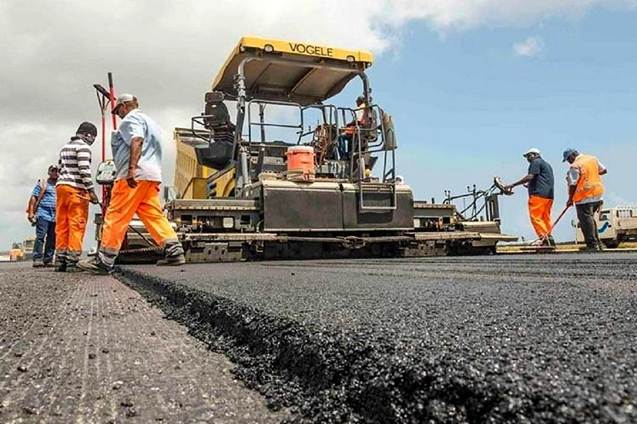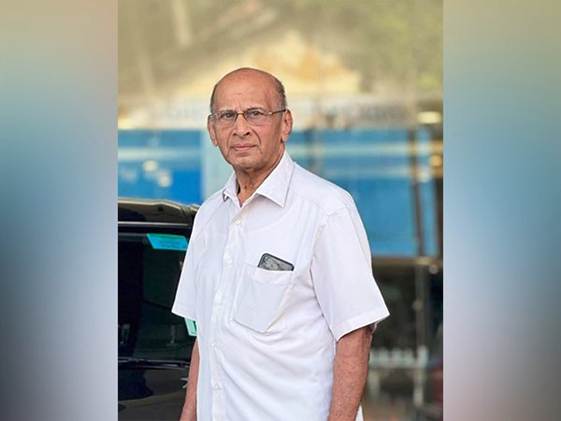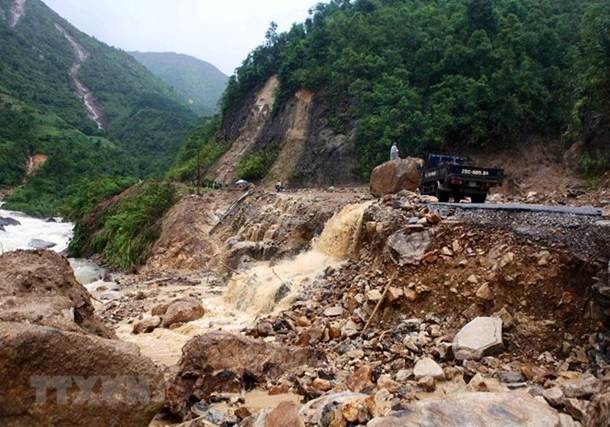Content
- Contractors to incur higher penalties for subpar roads
- In the name of a nation
- Balancing Oil, Trade, and Geopolitics
- The Two-Rupee Doctor
- Rain, landslides, flash floods: an uncertain mix
Contractors to incur higher penalties for subpar roads
Road Quality & Contractor Accountability
- Defect liability period for contractors increased from 5 to 10 years.
- Penalties include seizure of bank/performance guarantees, blacklisting, and investigations for deliberate faults.
- ₹40,000 crore investment to identify and fix accident-prone spots across the country.
- Innovations in road materials: use of rubber, plastic, and recycled waste for durability.
- Pre-cast drains made mandatory to reduce waterlogging damage.
- Safety-first approach in vulnerable regions (Himalayas, flood-prone zones), even if costs rise.
- Strengthened accountability and resilience measures aim to improve quality, reduce repair costs, and make infrastructure climate-resilient.
Relevance : GS 2(Governance) , GS 3(Infrastructure)

Toll Tax & Logistics Cost Reduction
- Annual ₹3,000 FASTag pass for passenger vehicles → reduces average per-toll cost to ~₹15.
- Four-wheelers form 80% of highway traffic.
- Logistics cost currently 16% of GDP; target to bring it down to 9% by December 2025.
- Example: Mumbai–Pune Expressway reduced travel time from 9 hours to 2 hours, saving fuel and costs.
- Lower logistics costs enhance competitiveness, facilitate trade, and improve supply chain efficiency.
Ethanol Blending & Biofuel Push
- E20 (20% ethanol blend) rollout — part of strategy to reduce ₹22 lakh crore fossil fuel import bill.
- Farmers benefit: Corn prices rose from ₹1,200 to ₹2,600/tonne; tripled cultivation in Bihar & UP.
- Early ethanol use caused vehicle corrosion; solved via ARAI design modifications.
- Flex-fuel vehicles running fully on ethanol cost ~₹25–₹30/litre vs ₹110 for petrol.
- Mileage drop acknowledged due to lower calorific value but offset by macroeconomic and rural benefits.
- Accusations of personal gain denied — ethanol plants reportedly loss-making and small-scale.
- Ethanol blending supports energy security, rural income diversification, and environmental goals, though it faces efficiency trade-offs and political economy challenges.
Automobile Industry & Trade Resilience
- Indian automobile exports not dependent on the U.S.; diversified markets in Africa, South Asia, Latin America.
- Exports include: electric Mercedes, Toyota flex engines, Maruti Suzuki vehicles, and two-wheelers (50% exported).
- Confident of growth despite U.S. tariff issues.
- Export diversification reduces vulnerability to trade disruptions and aligns with industrial self-reliance goals.
Major Infrastructure & Connectivity Projects
- Delhi–Mumbai, Delhi–Katra, Delhi–Dehradun Expressways expected to significantly cut travel time and logistics costs.
- Improved port connectivity to boost exports, trade, and investment.
- Logistics cost already reduced by 6–10% through ongoing projects (based on IIT/IIM studies).
- Strategic expressway development integrates domestic supply chains with global markets, enhancing India’s economic competitiveness.
Governance & Political Observations
- Election results’ fairness concerns are under Supreme Court review.
- Gadkari distances himself from Maharashtra political manoeuvres, focusing on national issues.
- Stresses that leadership succession questions are to be addressed by party president.
- Maintaining focus on policy performance and avoiding entanglement in regional politics reinforces governance credibility.
Facts for Prelims
- Contractor defect liability: 10 years.
- FASTag annual pass: ₹3,000; per-toll cost ~₹15.
- Logistics cost target: 9% of GDP by Dec 2025 (current: 16%).
- Ethanol blending target: E20; full ethanol vehicle fuel cost: ₹25–₹30/litre.
- Corn price rise post-ethanol demand: ₹1,200 → ₹2,600/tonne.
- Mumbai–Pune Expressway: travel time cut from 9 hrs to 2 hrs.
In the name of a nation
Geographical & Demographic Context
- Border Geography
- West Bengal–Bangladesh border: 2,216 km, of which ~450 km is unfenced → facilitates legal and illegal movement.
- Terrain includes rivers, chars (river islands), agricultural fields — difficult to fence fully.
- Population
- Significant Bengali–speaking population in bordering districts.
- Historic migration patterns mean linguistic and cultural similarity across the border.
Relevance : GS 2(Governance ,Federalism , Fundamental Rights)
Nature of the Recent Incidents
- Migrant workers from West Bengal, working in various Indian states, have been subjected to:
- Identity verification drives.
- Detentions exceeding the 24-hour legal limit in some cases.
- Alleged forced repatriation across the international border.
- Geographical spread of incidents: Maharashtra, Odisha, Gujarat, Delhi, Haryana.
- Occupations: Construction labour, factory workers, carpenters, agricultural labourers.
Legal & Administrative Framework
- Citizenship Determination
- Governed by Citizenship Act, 1955 and rules thereunder.
- Common documents used: Birth certificate, Aadhaar, voter ID, passport.
- Issue: Genuine documents do not always prevent detention due to verification disputes.
- Police Detention Norms
- Article 22(2) of Constitution + CrPC Section 57: Production before magistrate within 24 hours mandatory.
- Border Management
- Union Government responsibility (Union List – Entry 19: Citizenship, naturalisation, aliens).
- State governments handle local law & order (State List – Entry 2: Police).
Socio-Economic Drivers of Migration
- Push Factors from West Bengal
- Industrial share in national output declined from ~24% at independence to ~3.5% by 2021.
- NSO’s Annual Survey of Unincorporated Sector Enterprises: 3 million jobs lost (2015–16 to 2022–23) in WB’s informal sector.
- Low agricultural income; seasonal unemployment.
- Pull Factors in Other States
- Higher wages in manufacturing, construction, services.
- Established migrant worker networks in Maharashtra, Gujarat, Odisha, Delhi.
Historical Context of Cross-Border Movement
- 1905 Partition of Bengal: Administrative division along communal lines, annulled in 1911.
- 1947: Creation of East Pakistan → religious migration in both directions.
- 1971: Bangladesh Liberation War → large refugee influx.
- 2015 Land Boundary Agreement:
- Exchange of enclaves between India and Bangladesh.
- Residents given choice of nationality.
- Many enclave residents migrated within India after formal integration.
Documentation & Verification Challenges
- Language Similarity: Dialects and accents of border districts often identical on both sides.
- Document Gaps: Many rural citizens lack complete documentation or have inconsistencies (dates, spelling).
- Verification Infrastructure: Varies across states; inter-state communication gaps can prolong verification.
Security & Border Management Concerns
- Border Vulnerabilities
- Unfenced stretches used for illegal migration, cattle smuggling, and small-scale cross-border crime.
- Post-2024 Context
- Geopolitical changes in Bangladesh have led to enhanced scrutiny of border-linked movement.
- Identification Challenge
- Differentiating citizens from undocumented migrants in a culturally homogenous zone.
Humanitarian & Labour Welfare Aspects
- Impact on Workers
- Loss of employment due to sudden return.
- Financial instability for families reliant on remittances.
- Labour Rights
- Need for clarity on what documentation migrants must carry for inter-state movement.
- Awareness gaps on legal rights during detention and verification.
Governance & Policy Gaps
- Lack of a centralised, portable worker identity system that can be verified across states.
- Absence of real-time inter-state police communication protocols for quick citizenship verification.
- Border districts need integrated socio-economic development to reduce outmigration pressure.
Balancing Oil, Trade, and Geopolitics
Context & Trigger
- Event: PM Modi–President Putin phone conversation (Aug 8) amid heightened Indo-US trade tensions.
- Trigger: US President Donald Trump doubled tariffs on Indian goods to 50%, citing India’s continued purchase of Russian oil despite Western sanctions and geopolitical pressure.
- Backdrop: Ukraine war still ongoing; India and China maintain independent oil-import policies from Russia, drawing Western criticism.
Relevance : GS 2(International Relations)
India–Russia Relations: Special and Privileged Strategic Partnership
- Nature of Partnership:
- Established in 2010.
- Encompasses defence (S-400s, nuclear submarines), energy (nuclear plants, oil imports), space cooperation, and multilateral coordination (SCO, BRICS, G20).
- Current Significance:
- Russia remains a key oil supplier to India post-Ukraine war.
- India seeks diversification in energy sources but prioritises affordable crude.
- Engagement continues despite US secondary sanctions risk.
- Upcoming Diplomacy:
- Modi invited Putin to India later in 2025 — signals India is not caving to Western pressure.
US–India Trade Tensions
- Immediate Issue:
- Trump administration’s tariff hike from 25% to 50% — now highest globally for India.
- Negotiations for a trade agreement paused — pending political resolution.
- Underlying Issues:
- Market access disputes: India’s resistance to genetically modified (GM) products.
- Divergent positions on digital trade, agricultural subsidies, and tariff protection.
- Geoeconomic Impact:
- Trade slowdown could affect $120+ billion bilateral trade.
- Tariffs may hurt Indian exports in key sectors (textiles, engineering goods, gems & jewellery).
China Factor
- Xi–Putin Meeting:
- Shows strengthening China–Russia axis.
- China publicly welcomes Modi’s possible visit to SCO summit in Tianjin — suggests Beijing seeking to keep India in regional multilateral frameworks despite bilateral tensions.
- Parallel Position: India and China both assert oil purchases from Russia are in national interest.
Energy Security & Russian Oil
- HPCL Update:
- Cut Russian oil processing to 13.2% of crude basket (June quarter) — not due to geopolitics but reduced price advantage.
- Russian crude discount fell from $12/bbl (2022-23) to $2.2/bbl (2024-25).
- Policy Stance:
- No government directive to stop Russian oil imports.
- Refiners free to seek alternatives if economics unfavourable.
- Strategic Implication:
- India’s Russian oil imports more a market economics question now than geopolitics.
- Lower discounts reduce incentive; diversification may increase.
Multilateral & Strategic Implications
- SCO (Shanghai Cooperation Organisation):
- India’s continued participation — signals balanced engagement with Eurasian powers.
- G20 & BRICS:
- India’s position — strategic autonomy, not bloc alignment.
- US–Russia Rivalry Spillover:
- India faces balancing act — avoiding alienating either partner.
India’s Strategic Autonomy Doctrine
- Core Principle: “Issue-based alignment” — engages with multiple poles without joining permanent blocs.
- Application Here:
- Continues Russian energy engagement despite US pressure.
- Pauses trade talks with US, but avoids retaliatory tariffs immediately.
- Keeps channels open with China at SCO, despite LAC tensions.
Possible Outcomes (UPSC Analytical Angle)
- Short Term:
- Trade slowdown with US.
- Greater dependence on alternative energy suppliers if Russian price advantage continues to shrink.
- Putin visit likely to result in new defence/energy agreements.
- Medium Term:
- If Trump’s tariff policy hardens, India may pivot towards Eurasian Economic Union (EAEU) FTA with Russia & Central Asia.
- Long Term:
- India will push for multi-alignment, increasing role in BRICS+, SCO, G20 to counter overdependence on any single power.
The Two-Rupee Doctor
Relevance : GS 4(Ethics – Personalities), Essay Examples

- Lifelong commitment to service over profit, exemplified by charging₹2 for consultation for five decades despite rising costs.
- Guided by a value-based upbringing—medicine as a duty, not a means to wealth—reflecting intergenerational ethical transmission.
- Prioritised accessibility for the poorest through early morning hours, enabling daily-wage workers to seek treatment without loss of income.
- Maintained professional integrity by prescribing only generic medicines and avoiding unnecessary tests, resisting pressures of medical commercialisation.
- Operated with humility and simplicity, choosing a modest clinic setup over lucrative hospital or corporate offers, proving impact doesn’t require scale.
- Built trust and social capital—patients travelled up to 90 km, showing the power of credibility over marketing.
- Demonstrated that small, consistent acts of public service can have transformative societal impact, even without institutional backing.
- Lived ideals of equity, justice, and compassion, ensuring healthcare dignity for all, especially the underprivileged.
- Legacy continues through value-oriented practice of his son, showing sustainability of ethical models through personal example.
- Serves as a reminder that moral leadership at the grassroots can bridge governance gaps in critical sectors like health.
Rain, landslides, flash floods: an uncertain mix
Background & Context
- Incident Date & Location: 5 August 2025, Dharali village, Uttarkashi district, Uttarakhand.
- Impact: At least 4 confirmed deaths, many missing, widespread destruction, hundreds homeless/stranded.
- Pattern: Part of a series of recent extreme weather disasters in Himalayan states (e.g., Himachal Pradesh over the past month).
- Significance for UPSC: Integrates Disaster Management (GS-III), Climate Change impacts (GS-I & GS-III), Geography (monsoon, Himalayan ecology), and Governance (mitigation & preparedness).
Relevance : GS 3(Disaster Management, Climate Change) ,GS 1(Geography)

Understanding Flash Floods
- Definition: Sudden, intense flooding in normally dry areas or in rivers/streams, usually within 6 hours of a triggering event.
- Primary Triggers in Hills:
- Extreme Rainfall / Cloudbursts
- Glacial Lake Outburst Floods (GLOFs)
- Landslide Dam Breach
- Glacier/Ice Collapse into Rivers
- Mechanism in Hills:
Heavy rainfall/ice collapse → landslides/mudslides → debris-laden water rushes downstream → destruction of infrastructure, vegetation, and lives.
Meteorological & Geological Dimensions
Rainfall & Cloudburst
- Uttarkashi Rainfall Data (Aug 5, 2025): 32 mm in 24 hrs → double normal daily rainfall, but not extreme by IMD standards.
- Cloudburst Definition (IMD): ≥100 mm rainfall in ~1 hr over ~10 km² area.
- Relevance: No confirmed cloudburst; rainfall was moderate but still caused devastation — indicates underlying ecological fragility.
Possible Triggers in Dharali Case
- Hypothesis: Breach in upstream glacial lake (yet unconfirmed).
- Possibility of GLOF like Chamoli 2021, where 3–4 million m³ of water was released suddenly.
- Moderate rain could have acted as a secondary trigger in an already fragile slope with saturated soil.
Himalayan Fragility & Vulnerability
- Young Fold Mountains: Unconsolidated rocks, weak formations, high erosion susceptibility.
- Seismic Activity: Continuous tectonic movements make slopes unstable.
- Anthropogenic Stress:
- Road widening & tunnelling for highways/hydro projects.
- Riverbank construction, slope cutting.
- Tourism pressure → vehicular load, waste, unplanned infrastructure.
- Result: Even low-intensity triggers can cause disproportionate damage.
Climate Change Linkages
- Observed Trends:
- Increase in frequency & intensity of extreme rainfall events in the Himalayas.
- More cloudburst-like events and erratic precipitation patterns.
- Scientific Basis: Warmer atmosphere holds more moisture → higher precipitation intensity in short bursts.
- Implication: Higher unpredictability → challenges early warning systems.
Risk Factors Specific to the Incident
- Geomorphology: Steep slopes facilitate rapid downstream surge.
- Soil Saturation: Reduced infiltration capacity due to prior rains.
- Glacial Changes: Possible moraine-dammed lakes from glacier retreat.
- Human Settlement Patterns: Villages along riverbanks vulnerable to sudden surges.
- Construction Debris & Boulders: Can be swept downstream, amplifying destruction.
Challenges in Early Warning Systems
- Rainfall Prediction: Possible for heavy rainfall; difficult for hyper-local events like cloudbursts.
- Landslide Prediction: Progressing but limited — requires real-time soil moisture, slope stability, and seismic data.
- Flash Flood Prediction: Requires integration of meteorological + hydrological + geomorphic models — still nascent in India.
- Dharali Lesson: Even moderate rain can be disastrous; vulnerability mapping is as critical as rainfall forecasting.
Mitigation & Preparedness Strategies
Structural Measures
- Ban/restrict construction along active floodplains and riverbanks.
- Slope stabilization using vegetation, retaining walls.
- Safe storage/disposal of construction debris to prevent river blockage.
- Strengthen/relocate infrastructure away from high-risk zones.
Non-Structural Measures
- Early Warning Systems:
- Use of Doppler Weather Radars in mountain valleys.
- Integration with GLOF early warning tech (automatic lake level sensors).
- Community Preparedness:
- Mock drills, evacuation plans.
- GIS-based hazard mapping for all Himalayan districts.
- Policy Measures:
- Enforce Eco-Sensitive Zone (ESZ) regulations.
- Integrate climate resilience in Himalayan State Development Plans.



